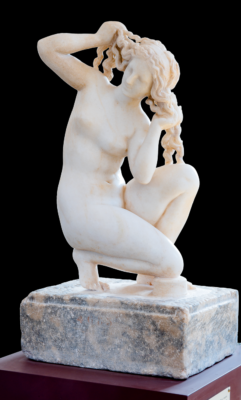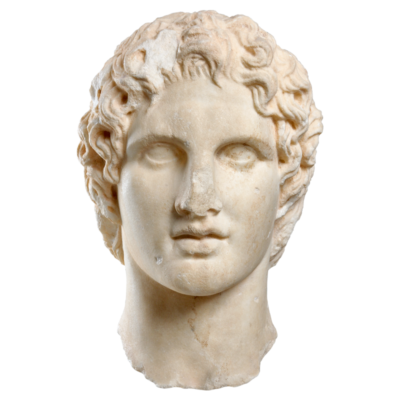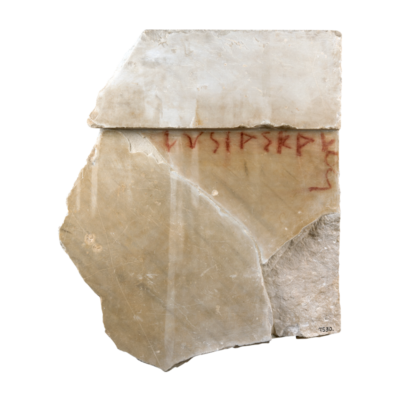Sphinx

Marble female head with polos (high headdress) and fine ribbon on the hair. The head belongs to one of the two Sphinxes that adorn the lintel over the entrance to the tomb monument of Kasta hill at Amphipolis.
From Amphipolis. Archaeological Museum of Amphipolis Λ 2059.
© Hellenic Ministry of Culture and Sports/Ephorate of Antiquities of Serres/H.O.C.RE. D. Photograph: Orestis Kourakis.
Marble head of a Sphinx from the monument at Kasta Hill in Amphipolis (no exact date is specified)
The Sphinx, a hybrid creature from Greek mythology, is portrayed here with refined feminine features, beautiful fleshy lips, and a neat hairstyle that makes us forget for a moment that her form represents a monster.
Her angled, stern, lightning-like gaze—with the right eye higher than the left—following the strong twist of her neck reminds us of her terrible role of guardian and protector in tombs and shrines. She is an apotropaic figure.
We can observe that over the years, and with the passage from the Archaic to the Classical and the Hellenistic eras, faces were gradually humanized and beauty began to prevail, even in the ugly monster, so that the demonic being no longer appeared terrible.
Perhaps this serves as a reminder that nothing in the world remains unaffected by beauty.
TOPICS FOR DISCUSSION
• Discuss woman as a link between the animal and the human.
• Talk about modern hybrid beings in pop culture, such as in transformers, robots, superheroes, etc.
• What could some beings of your own imagination prevent or protect today?
• Find images of the mythological hybrid creatures Cerberus, Centaur, Cecrops, Sphinx, Scylla, and Can you think of more? You can also match them with contemporary narratives, such as werewolves, teenage mutant ninja turtles, Frankenstein, or Spiderwoman.
DID YOU KNOW THAT...
• in about 150 C., the Roman senator Terentius Lucanus brought a slave from Carthage to Rome and soon discovered that he had an aptitude for the arts. After he educated him and freed him, he took the same name (Terence the African) and became involved in writing comedies. None of the comedies were distinguished in their time. But Terence coined a great phrase, which sums up the way we ought to approach our own times:
“Homo sum, humani nihil a me alienum puto,” or, “I am human, and I think nothing human is alien to me.”
→ Could the monstrous also feel familiar to us, when it appears with human characteristics?




